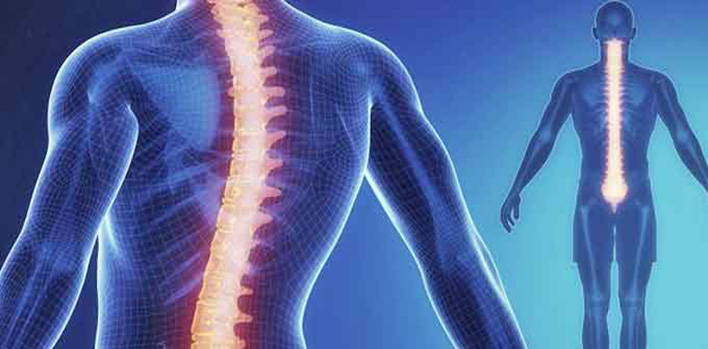What is Scoliosis?
Monday, July 31, 2017 | Healthy lifestyle
Scoliosis; The spine; Over 10 degrees; The cause is unknown, is defined as sideways sideways. This bending leads to rotation in the vertebrae.
In order for this definition to be understood, it is necessary to know how a normal spinal column has a settlement, a place in the general body structure.
Standing upright: when you look at the back, the spine stops on a straight line. There is no tilt to the side.
1- Posture of the skeleton from behind
.jpg)
2- Posture of the side of the spine
.jpg)
Standing upright, there is a curvature in front of the neck area (blue), in the back region (pink), in the back, back, waist region (yellow) and again forward, when viewed from the side (right or left) rather than the back. The spine with curvature in the lateral position, which is flat in the anterior-posterior view, is called the scrolling of the anterior-posterior tilting of the anterior-posterior plate and its accompanying rotation.
GENERAL FEATURES:
Scoliosis is often seen in 3 periods in human life.
Newborn-3 Age range: Infantile scoliosis, (Infantile scoliosis)
Age 4-10 years: Childhood scoliosis (Juvenile scoliosis)
The most common period is; It is the age-old scolyoze seen in the period from the age of 9-10 until the completion of the growth period. (Adolescent idiopathic scoliosis)
In this article, "Age of growth scoliosis" (Adolescent Idiopathic Scoliosis) is examined.
In medical terms; Adolescent idiopathic scoliosis is the main prospect of enlargement scoliosis with folk language, which may show increased growth and curvature.
In a disorder with a 20 degree curvature at 9-10 years of age, the curvature of 15 to 16 years old may lead to severe deformity by reaching 40-50 degrees. For this reason, it is important to detect it early.
Scoliosis cause:
The reason for the vast majority of age-related scoliosis is unknown (idiopathic: unknown cause). A number of reasons have been reported, some theories have been put forward. However, there is no proven theory yet. Many factors are thought to contribute to the formation of the disease. It has been shown that genetic factors play a role in 30% of cases.
CLINICAL CHARACTERISTICS:
Scoliosis; Usually in the age of 10 to 11 years, with mothers, physical education teachers, or a pediatrician examining the curtain in the back or for other reasons. It does not cause complaints such as pain, soreness, loss of motion. There will be no pain without reaching the advanced degree. If there is pain, the reason should be investigated.
Statistics show that girls are 4-7 times more likely to be seen than boys. Scoliosis is detected in the family or close to the beginning of the age of growth, especially if the girl's family is controlled by the benefit.
The child is subjected to forward bending test to check for scoliosis. This control should be repeated between 6 months and 2 years for girls to 9-11 for boys and 12-14 for boys. In this test, stand behind the child who is testing. When the child standing upright leans forward from the ham, there is a deviation in the child's backbone to the right or to the left, the backs of the vertebrae are on a line or there is a deviation. The two-sided chest wall is controlled at the same level.
Same time; Should the shoulders be on the same level, check for deformity in the chest wall. If there is doubt, the child should be examined by an orthopedist.
3- Forward bending test
.jpg)












